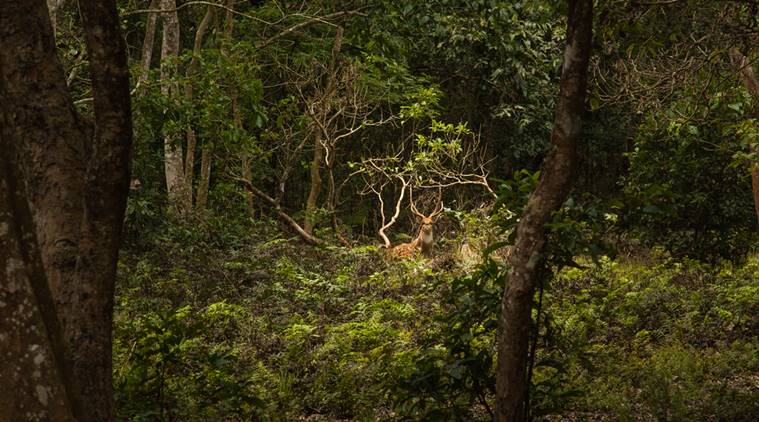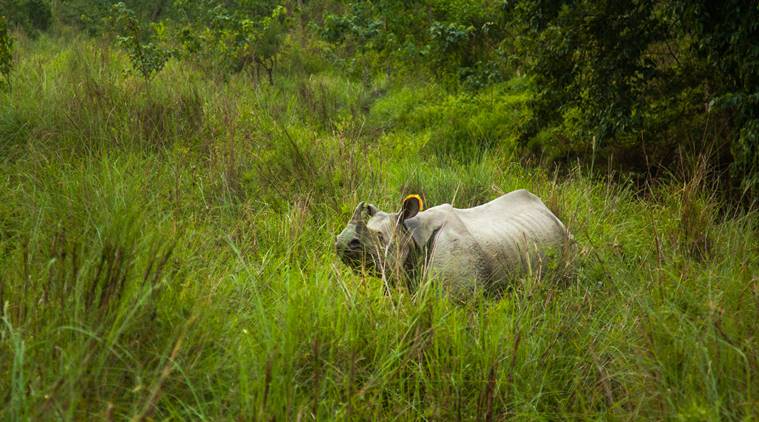
KAFAL PAKYO! Kafal pakyo!” mimicked my lanky Nepali guide Subhash Gurung as he tried to imitate in the local tongue the call of the shy but ubiquitous Indian cuckoo in the region. It was late April, and I was in Nepal’s Chitwan National Park. Kafal is a red raspberry found in parts of the Indian subcontinent and Southeast Asia that fruits for a short period during April-May and is a treat for both birds and humans. The lovely singsong tune of the koel’s call is reimagined as the birds rejoicing in Nepalese that the fruit (kafal) is ready to be eaten (pakyo). That deep and often humorous connection to nature was just what I missed in the urban environment.
Chitwan is Nepal’s much-vaunted destination that shot to fame for its success in bringing back its endangered greater one-horned rhinoceros numbers from the brink of elimination to a thriving population today. The park was established in 1973 and conferred with World Heritage site status in 1984 as one of the few remaining pristine tracts of Terai landscape.
I arrived in Chitwan one summer afternoon and made my way towards the secluded Meghauli region, far away from the crowded eastern entry point of Sauraha. At the time of my visit, Barahi Jungle Lodge was the only operational property. Settling into my cottage overlooking the low-lying hills, set on the banks of Rapti River, I breathed out the last of Kathmandu’s dust from my lungs as I took in the view from the porch.

I was quickly introduced to Subhash, who would be my guide for the next few days, and, Prem Gurung, who would be my guard in the jungle. That either of them was only as thin as I didn’t inspire much confidence but they certainly had years of experience under their belt, of living and working in the jungles of Nepal. We set out to a small patch of community forest called Andrauli in the outskirts of the national park on an evening safari, through a dense grove of silk cotton trees that opened into lush riverine grasslands by the riverside.
A black-hooded oriole quickly made its presence felt, standing out in striking yellow, amidst the green foliage. The sighting of a little rhino followed, its ears backlit in the evening sun. In the river close by, three more rhinos came to splash in the water where fishers had just removed their nets. A deer crossed our path, and, later, a pair of jackals stopped by to glare at us. Whatever listlessness I carried from the city, evaporated as the evening was spent in silent communion with nature.

Chitwan National Park is unique: it is, perhaps, one of the very few tiger reserves in the world where one can walk inside the core area. The park’s 100+ tigers are rarely seen but the 600+ rhinos that call Chitwan home present a clear, often downplayed danger.
To walk on the same ground where tigers, rhinos, elephants and leopards roam free is precisely the kind of stuff that would fuel my nightmares. Yet, there I was the next morning, sheepishly hiding between a cane-wielding guard and a nonchalant guide as a sad attempt to keep myself safe. The day went by in a dizzying mix of trepidation and exhilaration as we walked on trails, observing wildlife from eye level.

Scarlet minivet flitted in the trees around us. A turtle, startled by our presence, jumped into the stream. A wild boar scurried into the bushes, as did chital and sambar. And before the inevitable rhino rendezvous happened, an entirely unexpected encounter sent my heart into a tailspin — an 18-ft rock python basking in the sunshine just a few feet away from me! Walking had the benefit of getting off the track and heading straight into the snake’s lair on a hill. But I soon saw that my childhood notion of a vengeful and agile killer snake fueled by the nonsensical but immensely enjoyable “so bad it’s good” flick, Anaconda (1997), didn’t hold any water. The python was as calm as it could be and wanted only to slip into its shelter, the fallen tree bark.
The next day, I was back in the jungle on a Jeep safari, utterly bereft of the pressures of a big animal sighting. I was there to observe and listen, without expecting favour or a spectacle. The unhurried pace and the quiet nature of the wilderness were gifts enough. But the forest has plentiful for the willing.
Parked in silence under the shade of a hundred trees, we listened to the punctuating call of Indian cuckoo, cut through the stillness. Driving around, we saw a flamboyant male specimen of the Asian paradise flycatcher dashing through the greenery, with its white body and outlandishly long tail feathers, wooing the dull brown female specimen. A feisty black drongo chased off a great Indian hornbill 10 times its size and I was thrilled to witness the legendary gall of a drongo. Elsewhere, the wing beat of a flock of Oriental pied hornbills in flight alerted us to the sudden spectacle overhead. Spending a day in the forest is the optimal mindfulness exercise, I realised. The outside world simply disappears into oblivion.
Despite the pleasant nature of the morning safari, I soon found myself in the rather uncomfortable position of staring straight into the eyes of a rhino while I was on foot that evening. Subhash stood next to me while I froze in fear. He asked me not to make any quick movements and walk back to the jeep parked a few metres behind us. Minutes later, Subhash walked back as if it were a walk in a park and burst out laughing, along with Prem. I had foolishly assumed I’d be up for a close-up photo shoot of the rhino and walked closer to the gentle beast with my camera. Once my embarrassment subsided, I joined in the laughter and took a picture from afar, in safety.
While my days in the forest were filled with action, evenings were set aside for quiet contemplation and gratitude at the abundance of the natural world. When time would permit, I’d find myself at the serene confluence of Rapti and Narayani rivers for sundowners; a short boat rides away from the resort. By the time the last sun had set on my week in Chitwan, I knew that under the shadow of lofty mountains, there lies a wild, wild paradise in the plains.